Vancouver is one of many cities built around a deep-water port. The land around the industrial port, False Creek, has proven to be crucial in the redefinition of the city as a postmodern, postindustrial leisure place. The redevelopment of the area, now in its fourth decade, began with Granville Island and False Creek South, two 1970s projects ushered in during one of Vancouver’s most progressive political regimes. It continues today with Southeast False Creek, which includes the Olympic Village for the 2010 Winter Olympics. Travelling False Creek by boat gives a sense of the remarkable transformation the area has seen since its industrial heyday in the 1930 and 1940s.
As Granville Island factories serving the mining, forestry, construction, and shipping sectors began to fail in the 1950s, a new use for the area was needed. The 38-acre site was redeveloped as a multi-use area with a mix of industrial, artistic, market, housing, and retail uses, and is still owned and managed by Canada Mortgage and Housing Corporation (CMHC), which spearheaded the redevelopment. The cement plant, one of the last vestiges of industrial use on the island, can be seen from the Granville Street Bridge.
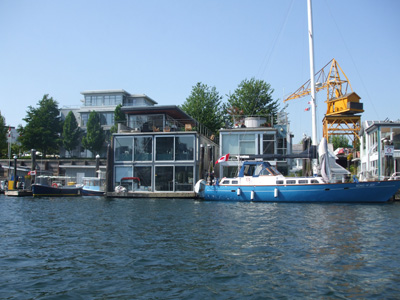
False Creek South includes co-op housing and other mixed-income housing, which if you know anything about Canadian housing policy dates it to the 1970s when CMHC actually encouraged, and even helped fund, non-market housing and tenure types other than ownership.
Then came Expo 86. A considerable amount of former industrial land was used for the world fair, as well as constructing the Expo Center (now Science World), BC Place and the SkyTrain, to satisfy the themes of transportation and communication.
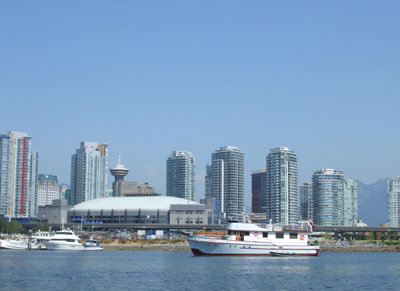
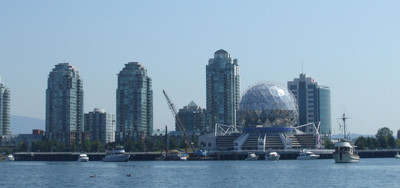
After Expo, the provincial government sold the majority of the land to Hong Kong developer Li Ka-Shing, whose Concord Pacific development company re-invented the Yaletown area. Depending on who you ask, this chain of events either spurred foreign investment in Vancouver, leading to a much-needed real estate boom and bringing it out of the pre-Expo recession…or it signalled the end of affordable housing and development for the local population in Vancouver, ushering in an era of globalization and immigration to the formerly sleepy forestry town. Probably both.
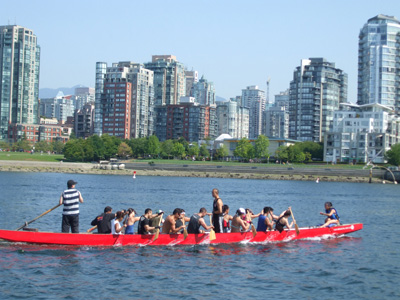
Currently under construction is Southeast False Creek, an 80-acre site which includes the Olympic Village. Billed as LEED Gold Standard construction, and with some “affordable” units (ie, a 700-sq. foot unit in Vancouver can run upwards of $400,000), the discussion over how many units would be “affordable” almost overshadowed the conversations over how to measure its sustainability. It is shocking how different such development is from the Granville Island and False Creek South initiatives, which managed to integrate a mixture of different housing types and tenure types to provide housing for a variety of income levels with the assistance of the federal and provincial governments. How the times have changed.
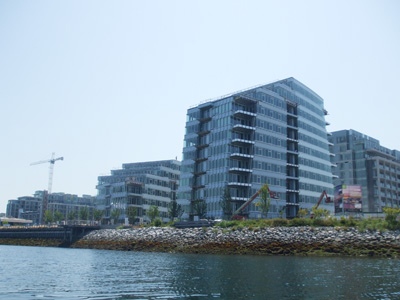

It is bittersweet to see these former industrial areas completely revamped, particularly when viewed from the water. The ships that still sail into False Creek carrying loads of freight (there is still an industrial area near Cambie Street) look almost out of place amidst all the shiny plate glass post-1990s development of Yaletown and Southeast False Creek. Most freight now heads to Burrard Inlet on the north side of the Downtown Peninsula instead. The pleasure craft, including kayaks, sailboats (including my hardy Alaska friends who are on a two-year sailing spree), powerboats and even dragon boats, look more at home in this transformed postindustrial landscape for the wealthy. Industrial land is now scarce in the region, so scarce in fact that Metro Vancouver now has plans to save what little is remaining.
The redevelopment of False Creek was both the beginning and the end for Vancouver: the beginning of a dense, urban centre with a population nearing two million, and the end of a small, provincial, densely forested town. Expo 86 is widely considered the event that “put Vancouver on the map” resulting in a population explosion and countless new business and development initiatives (read David Ley, Tom Hutton, John Punter or Katharyne Mitchell for more details). Doubtless Olympic fever will bring more of the same, for better or for worse. Transitions are always difficult, and Vancouver will soon experience more growing pains.
